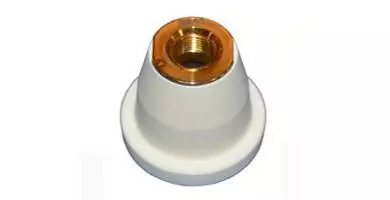Laser cutting is a widely popular process in various industries to cut materials ranging from wood to leather. Its demand is growing for both industrial and commercial purposes. This method involves the use of a computer to help with the cutting process. This results in a precise and smooth end- product. The first usage of this process was cutting diamonds. Gradually, with technological advancement, laser cutting has evolved. Today, three different types of lasers are popular to cut or engrave steel, titanium, stainless steel, wood, plastic and much more:
- Fiber lasers
- CO2 lasers
- Nd and Nd-YAG
Despite all the advantages, you can not overlook the fact that the laser cutting process can be dangerous because of the harmful fumes that the machine emits. Even if the operators take preventive measures to protect their eyes and skin, the danger still lingers if you do not have an air filtration system. One way to manage the risk with laser fumes is to use laser machines that are reliable, safe and whose parts are made by the experts. For instance, machines using Bystronic laser parts or lvd strippit parts.

Laser Fumes Are Dangerous
Laser cutting process emits different chemicals, chemical vapors, aerosols, smoke and compounds. Plus, heating metals involved in the cutting process create oxidized compounds. Such elements can be harmful when inhaled.
According to Carnegie Mellon University, laser beams are dangerous because Laser-Generated Air Contaminants are released. This report also gives a list of some materials and the associated emissions.
- Kevlar: Respirable dust
- Polycarbonate: Respirable dust and Cresol
- Rubber: Respirable dust and 1,3-Butadiene
- Mild steel: Iron oxide, NO, NO2, CO
- Stainless steel: Nickel, Chromium
- Nimonics: Cobalt, Chromium, Nickel
According to the Board of Laser Safety, during the cutting process, high temperatures cause the surrounding air to expand. They emit gases that expand quickly and release dangerous particles.
Sometimes irregular maintenance adds up to such dangers. So, always check your machine and if the parts need replacement, you can choose well-known brands. Users consider solutions by Bystronic laser parts or lvd strippit parts secure.
Effects of Laser Fumes
The smoke from laser and plasma cutting is a mixture of various gases. It has different side effects that include irritation of the eyes, nose and throat.
When you mix the metal fume fever with zinc fumes, people working in those surroundings can suffer from symptoms like headaches, chills, muscle aches and coughing.
If a person regularly deals with metal smoke, he is likely to get infections such as pneumonia and bronchitis. This can also lead to fibrotic lung disease.
The exposure can also cause chronic obstructive pulmonary disease (COPD).
Smoke from plasma and laser cutting does not just damage the lungs but research suggests that prolonged exposure to harmful smoke results in measurable amounts of metal particles in the blood as well. This shows that any person who breathes the air will have high levels built up in their blood.
These flames don’t spare your kidney. The kidneys are the organs that remove waste materials from the body. Metals like hexavalent chromium and cadmium. This damages the kidney and reduces the ability of the organ to remove materials from the body.
Sometimes metal fumes also cause cardiovascular diseases. People dealing with jobs like welding, plasma, and cutting have a higher risk of strokes, heart attacks and coronary arteries.
Solution
Common ventilation is not enough to prevent the danger. You can install a fume extraction system. A proper fume control will enable you to see a haze of particles in the air. Regularly change the filters to ensure proper removal of fumes. Use reliable solutions like Bystronic laser parts or lvd strippit parts.




